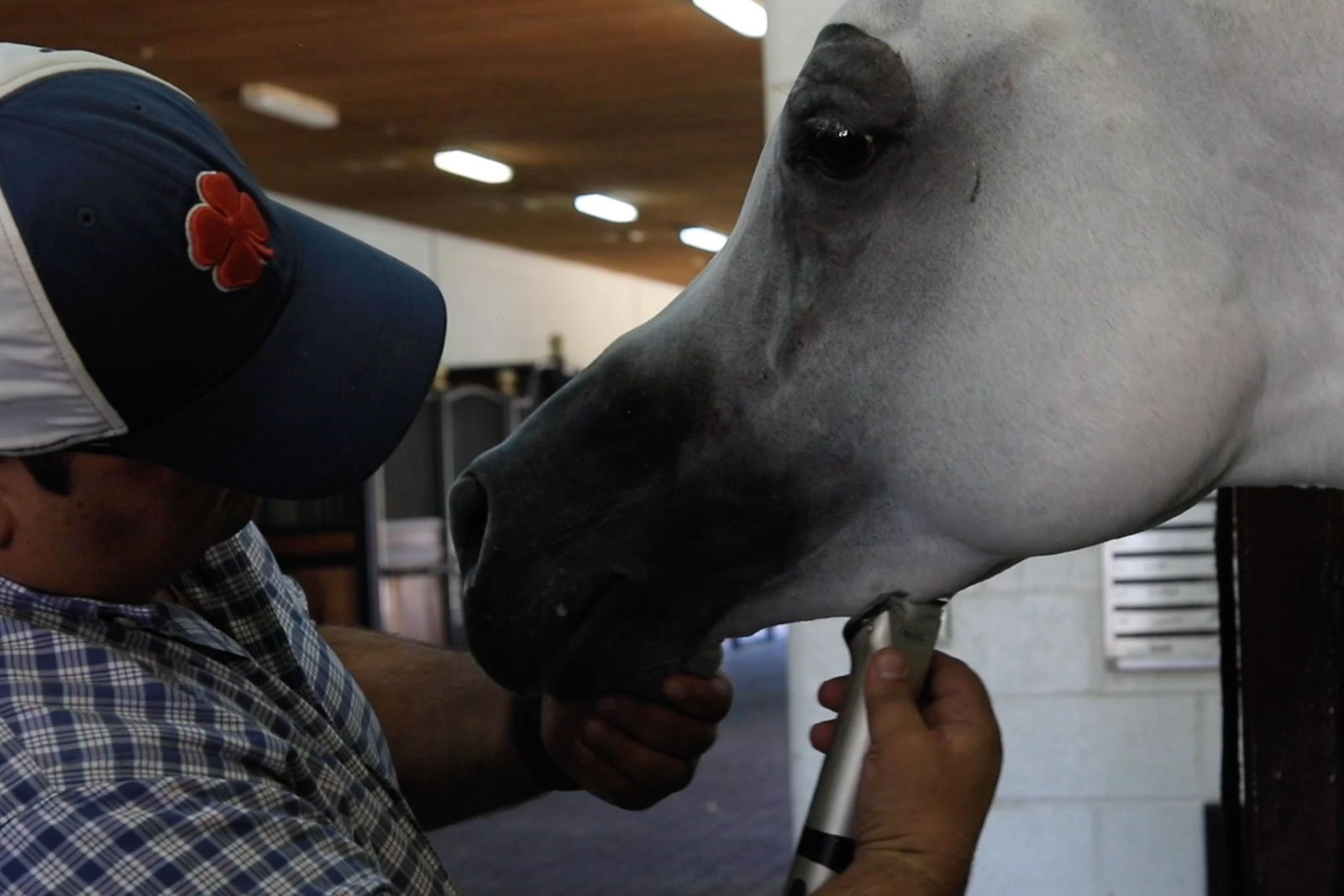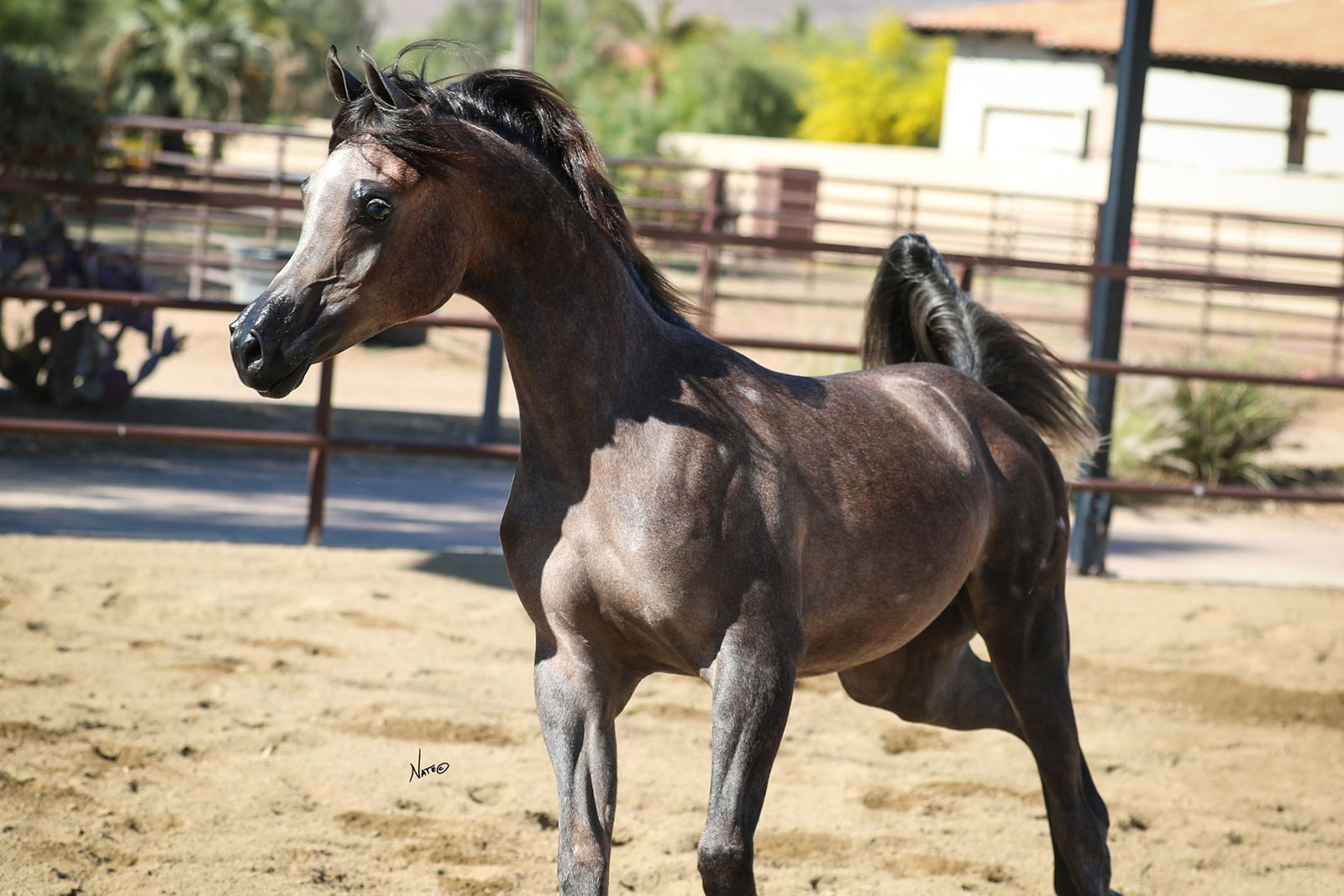The Arabian’s head is a defining characteristic of the breed. Show clipping is a practice that is used in the horse world to highlight the definition and refinement of a horse’s face. “The main goal of show clipping is to accentuate the Arabian’s distinct facial features. When we show clip, we try to recreate a horse’s natural ‘Summer mask’. This includes black skin above the eyes, under the eyes, and along the cheek bones and muzzle.” As shown in the video, Michael Carpio demonstrates with a marker on our subject, six-year-old straight Egyptian stallion, Aria Bakare.
When it comes to show clipping Arabian horses, Michael Carpio is an artist. In his 27 years of working with horses, Michael has collaborated with every major Arabian horse barn in the U.S. Luckily for us, Michael loves to teach and share his tips. Arabian Horse World joined him at the barn to learn his techniques.
- Using the Wahl clippers with a #15 blade, the reverse “V” clip is used to exaggerate the distance between the eyes. “I clip a reverse “V” between the muscles of the forehead and the middle point of the forehead, below the forelock.” Carpio describes. He continues past the eyes and clips the rest of the face above the cheekbones down to half of the muzzle.
- Next, changing the to a #10 blade, Michael goes in the opposite direction lightly to blend the reverse “V” into the rest of the face as shown in the video.
- The next step is shaving specific areas to darken the desired facial features. Using the Andis clippers with a #50 blade, follow the lines drawn on the muzzle, the eye sockets and the under eyes. As seen in the video, Michael left the long whiskers or “feelers” on the eyelids.
- Switching the Andis clippers to the #40 blade, clip the muzzle one-quarter of an inch above the drawn lines using gentle pressure to feather the lines, and then clip one-eighth of an inch around the drawn lines around the eye sockets and under eyes.
- The final step is to blend. “I use the Wahl clippers with a #30 blade and blend around all of the sections that I’ve darkened to smooth out any lines,” Michael says. He then changes to a #15 blade to clean up edges around the cheeks and on the face.
The last detail is a touch of vaseline to keep the horse’s skin soft. While it takes practice to learn the art of clipping, it is just that, an art. Each horse’s face and features are unique, and practice makes perfect.
Clipping Supplies with links below if you’d like to purchase the same products:






